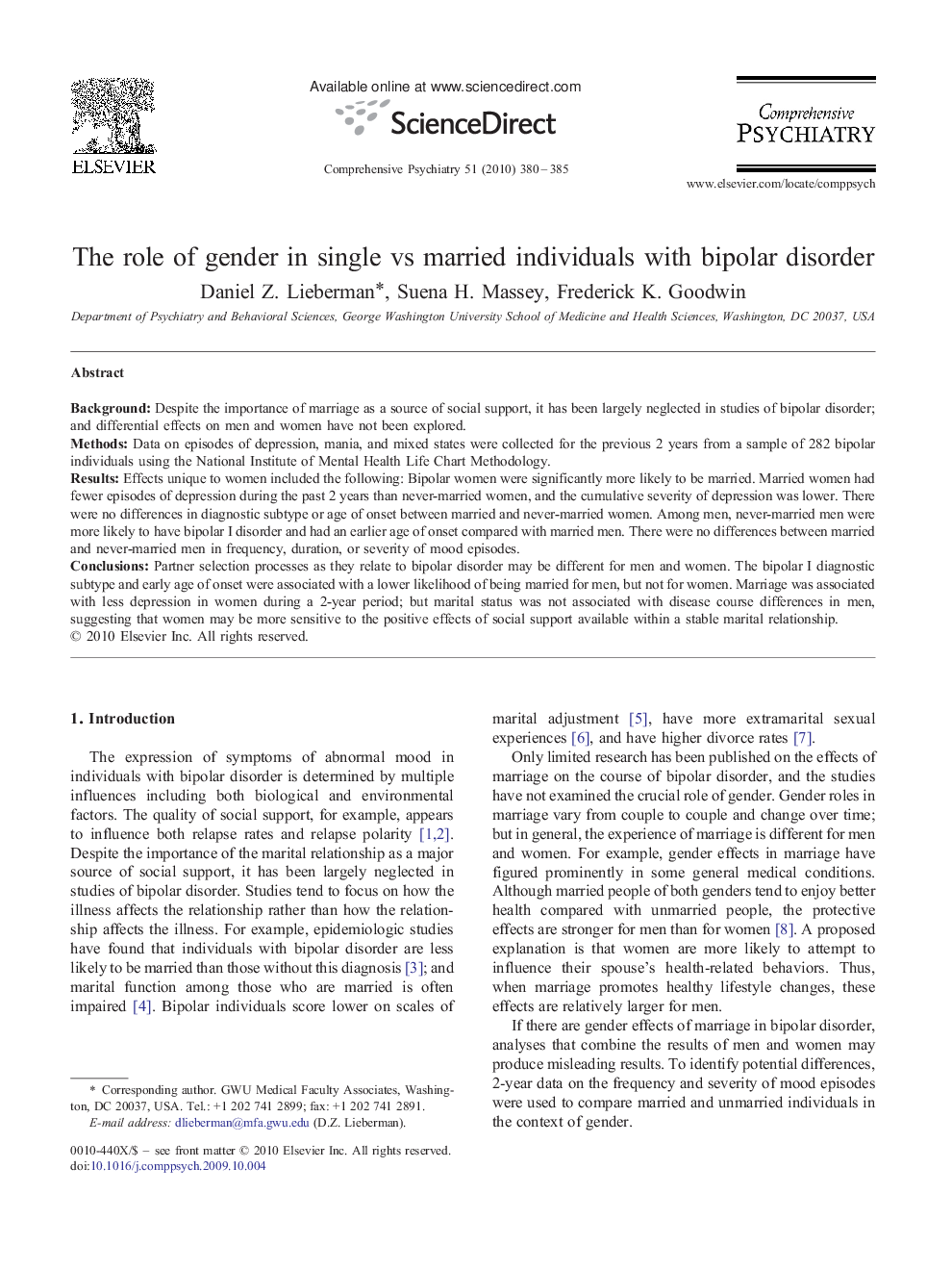| کد مقاله | کد نشریه | سال انتشار | مقاله انگلیسی | نسخه تمام متن |
|---|---|---|---|---|
| 318492 | 538329 | 2010 | 6 صفحه PDF | دانلود رایگان |

BackgroundDespite the importance of marriage as a source of social support, it has been largely neglected in studies of bipolar disorder; and differential effects on men and women have not been explored.MethodsData on episodes of depression, mania, and mixed states were collected for the previous 2 years from a sample of 282 bipolar individuals using the National Institute of Mental Health Life Chart Methodology.ResultsEffects unique to women included the following: Bipolar women were significantly more likely to be married. Married women had fewer episodes of depression during the past 2 years than never-married women, and the cumulative severity of depression was lower. There were no differences in diagnostic subtype or age of onset between married and never-married women. Among men, never-married men were more likely to have bipolar I disorder and had an earlier age of onset compared with married men. There were no differences between married and never-married men in frequency, duration, or severity of mood episodes.ConclusionsPartner selection processes as they relate to bipolar disorder may be different for men and women. The bipolar I diagnostic subtype and early age of onset were associated with a lower likelihood of being married for men, but not for women. Marriage was associated with less depression in women during a 2-year period; but marital status was not associated with disease course differences in men, suggesting that women may be more sensitive to the positive effects of social support available within a stable marital relationship.
Journal: Comprehensive Psychiatry - Volume 51, Issue 4, July–August 2010, Pages 380–385